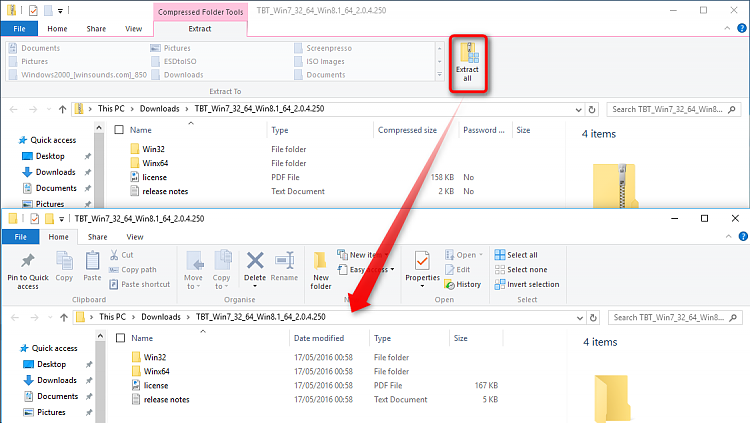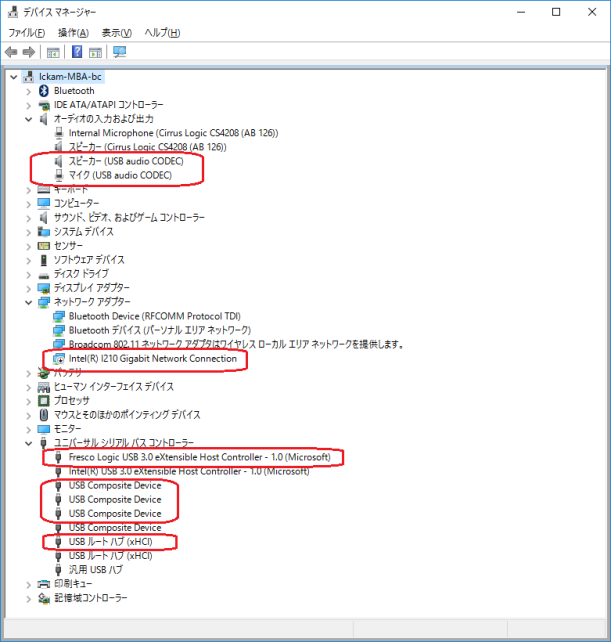So... A couple of years ago I purchased a Thunderbolt capable motherboard (Gigabyte GA-z77X-UP5), and an Apple's 27-in Thunderbolt Display--rather than it's (now-discontinued) Apple LED Cinema display--to go along with my Apple iMac 2010 (as a dual-display setup) which I was primarily using as an LED monitor for my Windows 7/8 PC. Boy was that a mistake... LOL . Thunderbolt support on non-Apple computers was TERRIBLE back then. Maybe it still is terrible still, but I got some good news after all this time.
Apple disables sleep because of a limitation of Apple's Boot Camp Thunderbolt drivers for Windows. In order for Windows (booting a Mac) to recognize Thunderbolt, it has to boot up with Thunderbolt. Re-run Boot Camp Assistant to remove the Windows partition and restore the full Mac HD as a single partition. Run a PRAM reset (restart, while screen is still black, hold down ⌘+Option+P+R and keep them pressed until you hear the startup sound a second time). Download this driver package and unzip it to a folder on the Intel NUC. Connect a Thunderbolt device to the Thunderbolt port. Browse to and select the folder where you unzipped the driver package. Right-click on all four.inf files and select Install.
I had nothing but problems trying to get the Apple Thunderbolt Display to work alongside my ATI Radeon HD 7970 and the iMac (display port LED monitor).
- LucidLogix Virtu MVP Software was buggy and unstable.
- Photoshop wouldn't work with graphic card acceleration support.
- Trying to see the BIOS (post screen) was non-existent with the Thunderbolt display. Had to unplug that and only use the iMac display port connection connected to the ATI Radeon HD 7979.
Long story short, I ended up using my 27-in iMac as a primary monitor, and had the Apple Thunderbolt Display sitting on my desk for 2 years, doing nothing but looking sweet... Because if nothing else, Apple has my kind of taste when it comes to appearances. I love modern/minimilast/industrial, or whatever you want to call this, style...

This was the initial studio setup about 3 years ago... The Apple devices look great. And, if you're wondering, yes I primarily use Windows, but have no problems using Apple OS X. I've been obsessed with computers since the Amiga and Commodore 64 days; before most people thought of computers as something that only nerdy people use--that is before 'nerdy' or 'geeky' was considered a positive attribute.

Anyhow...
On to the main point of all this... Just today, as I'm extremely swamped with projects, and BOOM, the iMac completely died, the screen turned off and the internal fans went full blast, shooting dust and black crap out it; never heard the fan anywhere near that loud (but I did read a while back that people experienced this when they tried replacing their HDD and the internal temperature sensor wasn't reconnected properly--on my the HDD went bad about a month ago, making OS X useless (took like 10 min to boot) but I didn't mind since I was only using it as a monitor. So I was like, 'shit... at least I still have the Apple Thunderbolt Display' ...
So not having to worry about dual-display, or having to use my ATI card for any 3D or Video production intensive tasks, the integrated Intel HD 4000 display is good enough for my current needs.
So I plug in the Apple Thunderbolt Display, and 'BOOM it works! Awesome!' ... Now after coming off my relief and excitement, I now notice a GLARING problem: the display is extremely bright. It's almost impossible to use it at this brightness level; especially at dark.

'Oh man... knew things were going too good...' So, thinking back at my, nothing but grief, history with the Thunderbolt Display, I'm not too optimistic on finding a solution.
Of course all the usual suspects didn't work:
- Brightness function keys on the Apple wireless keyboard (yes that works fine on a PC too)
- Intel Display control panel didn't have any brightness settings.
- Apple Boot Camp 5.x display drivers by themselves didn't do shit if installed -- more on this below.
- etc...
Well, come to find out you need to install Apple Boot Camp 5 in order to get the display brightness controls to work--and no, you can't just install the individual drivers; it needs the bootcamp control panel, which is only installed properly if you do the full Boot Camp 5 install. As of this writing, nothing but that exists to control the Thunderbolt Display brightness on a non-apple computer.

'OK, fine... let's do the full install and hope that it doesn't overwrite my current drivers' ...
So, without any other options, I chose to go ahead and install the full Boot Camp 5....
And... an error:
Windows 10 Thunderbolt Driver Bootcamp Software
'Boot Camp x64 is unsupported on this computer'
'WTF? godamn this piece of shit!'
Yeah, my history with this thing is becoming more and more apparent... So I search the internet far and wide, with very little support, and came to the (obvsious) conclusion, Apple doesn't want Windows users to be happy.
So! After about a couple of hours of trying to find a solution on the internet with no success, I end up messing around with the installation, and figure out a solution.
The fix
- Download Boot Camp 5.
- Put it somewhere like C:drivers (create the folder if needed. We want a short path, because sometimes driver installs go bad due to long path)
- Extract it with 7zip.
- Start the command prompt with Admin priviledges.
- This can be done in Windows 8 or 8.1 by right-clicking the bottom left corner of the screen, and the selecting 'Command Prompt (Admin)'
- Or you can click Run and then type in cmd followed by hitting SHIFT + CONTROL + ENTER
- In the cmd prompt browse to where you extracted Boot Camp, specifically: BootCampDriversApple
And that should do it... Reboot your PC and and you should now see a black diamond (Boot Camp) icon in the notification center, next to the time (where volume is located)
To control the brightness without an Apple keyboard, just click that Boot Camp icon, wait for it to load (it takes about 5 or more seconds for whatever reason) and click the 'Brightness' tab, and the rest is self explanatory.
If you have an apple keyboard, you can just use the F1 and F2 keys (the ones with sun icons) to control the brightness--Apple keyboards by default have the 'fn' key option enabled, opposite of regular keyboards. Meaning, if you wanted to use F1, F2, F3, etc on an Apple keyboard, you'd have to press the fn+F1, fn+F2, fn+F3, etc.
BTW, the Apple keyboard drivers, unlike the Apple Thunderbolt Display drivers, can be installed just by running:
I guess on non-Apple keyboards, you can control the brightness by hitting fn+f1 and fn+f2.
Alright... there you go. Hope this brings joy to someone's life as it has brought it to my--inspiring this drawn out, rambling, post...
View the discussion thread.

Note: This is a bit off-topic from my usual SharePoint ramblings, but I just needed to archive this information and most likely I’m not the only one with this issue.
I use a Mac, but have Windows 10 installed via bootcamp. That is not always without issues and don’t even get me started with battery life. Somehow I suspecting Apple to have written a faulty driver on purpose, so Windows will burn through the battery faster than OS X will. Another issue with using windows on a Mac via Bootcamp, is the Ethernet adapter is not installer as part of the Bootcamp drivers install. At least not, when you are using Windows 10. A little research revealed that there is a simple solution to this issue.
The problem:
Using a Thunderbolt-to-Ethernet adapter to connect to the Ethernet doesn’t work when you are on a Windows 10 (Windows 7 or 8 seems to have the same problem). There is no driver for the adapter installed in the Bootcamp driver-install on Windows 10.
The solution:
Thunderbolt Software Download Windows 10
- Download “NetLink®/NetXtreme® I Desktop/Mobile/Server (x64)” from https://www.broadcom.com/support/ethernet-nic-netxtreme-i-desktop-mobile
- Unpack the zip file
- right-click on the “b57nd60a.inf” information file and select “Install”
- Leave the cable and adapter plugged into your mac
- Reboot
- Windows should recognize the adapter and use the driver you’ve just installed
Every time you wish to use the Thunderbolt-to-Ethernet adapter to get access to the network, you have to plug the cable and the reboot.